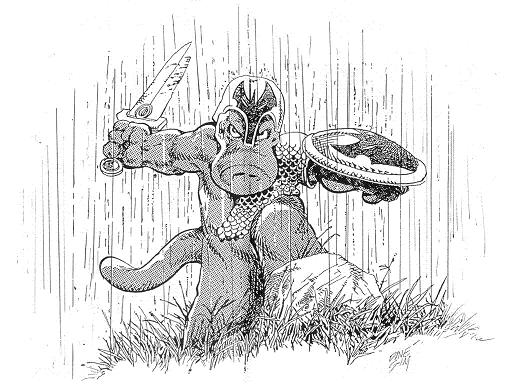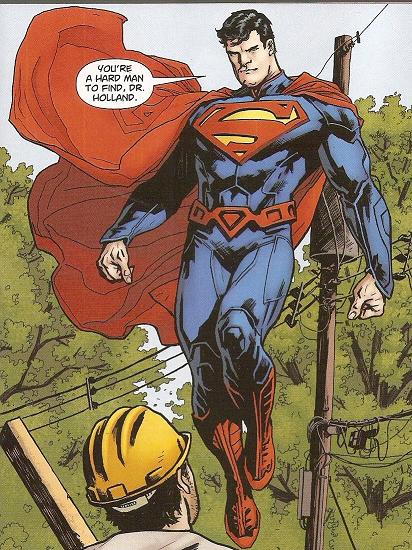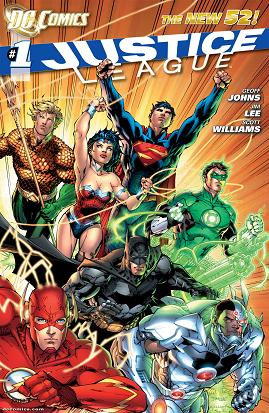
Tim O’Neil continues his exploration of Dave Sim and Cerebus with a summing up of essential facts you need to know about Dave Sim:
Dave Sim does not see the world the same way that you or I do.
This fact is a consequence of the first three. Sim rejects modernity on an almost wholesale basis, an abjuration that extends all the way to having a disinclination for computers (his internet presence often takes the form of transcripts uploaded from his electric typewriter). His religious turn – a turn which was preceded by and followed perhaps as an inevitable consequence of his conservative turn – recasts almost the entirety of modern existence in negative terms. He dislikes Picasso and dislikes Freud and dislikes Marx and (although I can’t remember specifically if it’s come up) probably dislikes Nietzsche as well.
What this means in practice is that he explicitly rejects the language and collective metaphors that we – many of us, at least, of the leftist, liberal or conservative persuasions – use to discuss the contemporary world. Although he has little patience for narrow-minded congregationalists, he has cast his rhetorical lot in with the forces of anti-modernity who insist on using the language of scripture to diagnose the sins of the present. He outright dismisses the language of contemporary (and by “contemporary” in this instance I mean at least the last 250-300 years) philosophy and social theory as meaningless “bafflegab.”
You know who that reminded me off? Philip K. Dick, another autodidact with an idiosyncratic personal religious worldview very much out of step with modern society, whose work is inseparable from these beliefs, especially his later novels. Both reject contemporary America as wrong and false, both make for uncomfortable reading to the point where you are tempted to question their sanity.
Where they differ, if Tim is right in his assumptions, is that whereas Dick has only become more popular since his death in 1982, has been embraced by the literary mainstream as well as remained popular by his original genre audience, Sim’s magnus opus may die unmourned and unloved with him, save for those in academia who will read Cerebus out of intellectual curiosity or as an artifact of a specific period in the evolution of the American comics artform. Certainly the critical and reader attention Cerebus gets right now is considerably less than you’d expect from a comic that was for decades one of the automatic standard bearers of the idea that comics = art, so it’s quite possible Tim is right.

What Tim has not yet looked at is whether or not the idea that few if any people will ever tackle the whole of Cerebus ever again is a bad thing. In other words, how much of Cerebus is worth reading for somebody who isn’t an academic or critic looking for dissertation material. Perhaps only the “good parts” version of Cerebus — High Society, Church and State, maybe Jaka’s Story — deserves to be read. There’s too much focus in comics criticism on complete runs of a given series or creator anyway, as e.g. the recent Hooded Utilitarian comics poll showed, where of the top ten entries, only two were for discrete stories, the rest for full runs of iconic comics. Which is cheating, as even in the best run there are weaker and stronger issues, stories worthy of inclusion on a Top 115 list and stories that aren’t. It’s also lazy, as you don’t have to think or argue for what Fantastic Four story to include…. The whole of Cerebus is not worth reading, but parts of it are excellent.
But there is a larger problem with Cerebus, as commenter moose n squirrel argues:
You reduce Sim’s views to a highly idiosyncratic and eccentric religious conservatism, and just shrug them off, as if he’s a harmless old crank because nobody’s going to slog through “Chasing YHWH” and convert to his one-man version of Gnosticism.
But the core of Sim’s worldview is not mere “religious conservatism” – it’s hatred of women, which is hardly eccentric or idiosyncratic. Indeed, Sim’s ideas about women are all too sadly common – again, I ask you to look at the numbers of women who are subject to domestic and sexual violence in the United States, at the percentage of women who’ve been raped, at the number of women who, once raped, don’t bother reporting that rape because they see such an action as futile. Hatred of women is not some sad curiosity limited to one obscure Canadian cartoonist. And as much as Sim attempts to dress his hatred of women up with a bunch of bullshit religious cosmology, the core of his message is the same vicious misogynistic bullshit women have been getting from assholes like him for the last six thousand years.
Again: if Sim’s target was black people instead of women, if people from Africa were the soul-sucking voids that corrupted pure, rational white men, would it be so easy to dismiss? If he built a vast cosmology explaining how white men of Northern European descent have all been enslaved by Jews, would we be hearing any arguments about how “well, obviously he’s a little crazy, but you’ve really got to appreciate what he did with his lettering”? And if not, what makes the hatred and oppression of women more acceptable than the hatred and oppression of these other groups?
It’s a bit too pat to say that you should separate the art from the artist’s politics. With some you can, but with Dave Sim this is of course impossible as his worldview informs everything he did with Cerebus. I can well understand people who want to stay clear of this, or who do not want to support such views by buying Sim’s books. On the other hand, to take Sim to tasks for all the oppression women have suffered and do suffer in the world is a bit too much. In the end Sim is a harmless old crank, with disgusting views but neither in a position of power to enforce those views nor likely to seduce anybody to his side through his artwork. Enjoying his art while rejecting his politics is much easier to do than it is even with somebody like Jack Chick, whose worldview is of a similar nastiness yet whose comics have been studied and even enjoyed by the very same people his pamphlets condemn to hell.




